Agentic AI: Revolutionizing Telecom Infrastructures
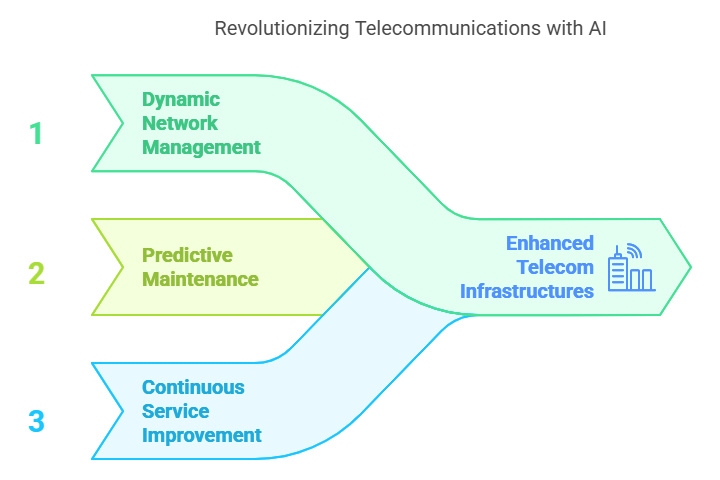
💡Dive into a future where telecom infrastructures become smarter, more resilient, and autonomous!
✒️This article explores the practical applications of agentic AI, a major technological advancement, in the telecommunications sector. Designed to be autonomous, adaptive, and goal-oriented, these digital agents act in real-time to optimize networks, anticipate failures, and automate complex processes, going far beyond simple customer support interactions.
🔍Dynamic network management, predictive maintenance, continuous service improvement… Learn through examples how industry leaders like AT&T, NTT Docomo, Orange, and Vodafone have embraced this game-changing innovation!
Foreword
- This article, enhanced with AI-generated improvements (Napkin, Microsoft Copilot, NotebookLM), is made available under the CC BY-ND 4.0
- The next article will focus on the impact of AI agents on IT professionals. Follow my LinkedIn Feed or subscribe to the RSS feed to stay updated!
What is Agentic AI?
Agentic AI, also known as AI agents, refers to a set of artificial intelligence systems designed to exhibit autonomy, reasoning, goal orientation, adaptability, and the ability to interact dynamically with their environment. They act on behalf of humans or systems, making independent decisions, adapting over time, and achieving specified outcomes without requiring constant supervision.
Unlike static AI models, AI agents are holistic, adaptive, and proactive, acting almost like digital employees with specialized knowledge and the ability to evolve their strategies. They can collaborate across different domains, sharing information and coordinating responses.
Applications of Agentic AI in Telecommunications
The application of agentic AI in telecommunications extends to several critical areas beyond simple customer support.
Network Management and Optimization
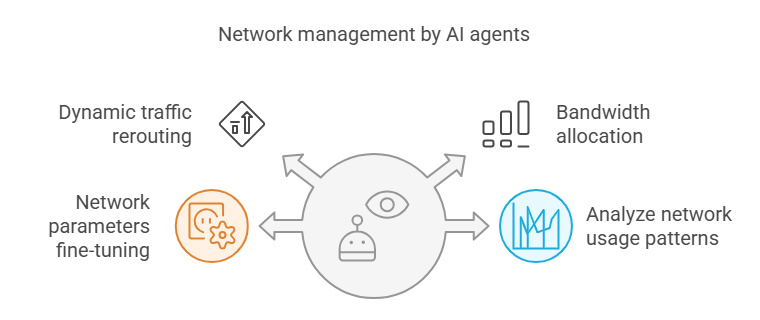 AI agents continuously monitor network infrastructure. They analyze key performance indicators (KPIs) and performance metrics. They can detect bottlenecks, high-latency areas, or overloaded nodes. In response, they implement actions such as dynamic traffic rerouting or bandwidth allocation to ensure maximum availability and optimal quality of service (QoS). AI continuously tracks network activity and adjusts resources to maintain stability. Agents can fine-tune network parameters for optimal connectivity by analyzing data from connected devices.
AI agents continuously monitor network infrastructure. They analyze key performance indicators (KPIs) and performance metrics. They can detect bottlenecks, high-latency areas, or overloaded nodes. In response, they implement actions such as dynamic traffic rerouting or bandwidth allocation to ensure maximum availability and optimal quality of service (QoS). AI continuously tracks network activity and adjusts resources to maintain stability. Agents can fine-tune network parameters for optimal connectivity by analyzing data from connected devices.
The use of agentic AI aligns with the AIOps (Artificial Intelligence for IT Operations) practice, where it is used to analyze network usage patterns, optimize resource allocation, and assist in infrastructure planning.
Real-World Examples
- NTT Docomo has integrated AI at the core of its network management strategy, employing AI-based predictive analytics to enhance network performance, minimize latency, and improve spectrum efficiency. Specific agents like the OLT Agent (for Optical Line Terminal data) and the ACS Agent (for Auto Configuration Server data) can handle technical queries related to the infrastructure[1].
- Vodafone uses AI-based tools to assess RAN (Radio Access Network) sites and optimize network functionality through predictive maintenance and continuous configuration tasks[2].
[1][2] Forbes - Transforming Telecom Operations Through Agentic And Generative AI
Predictive Maintenance
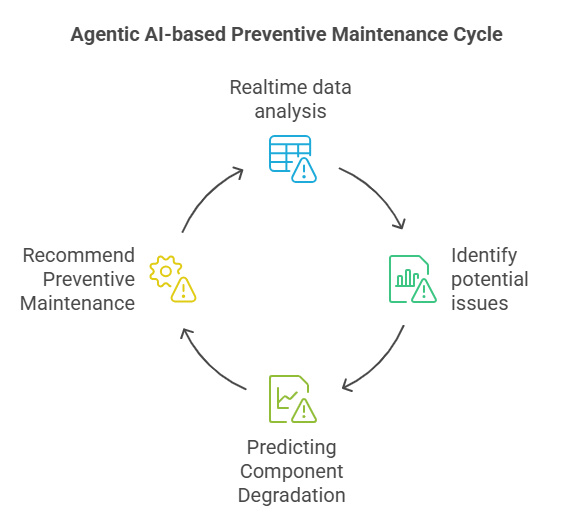 AI agents can predict and resolve failures before they impact service. They analyze network data in real-time to detect patterns indicating potential issues, enabling rapid intervention. By leveraging historical data, AI predicts when components may degrade and recommends preventive maintenance to avoid outages.
AI agents can predict and resolve failures before they impact service. They analyze network data in real-time to detect patterns indicating potential issues, enabling rapid intervention. By leveraging historical data, AI predicts when components may degrade and recommends preventive maintenance to avoid outages.
Real-World Examples
- AT&T uses generative AI for predictive network maintenance, anticipating congestion, detecting potential disruptions, and automating corrective measures before customers experience issues[3].
- Vodafone integrates AI for predictive maintenance to optimize network functionality. AI can identify early signs of hardware degradation and schedule maintenance to minimize downtime[4].
[3] AT&T Labs - Analytics and AI-based automation
[4] Google Cloud - How Vodafone is using gen AI to enhance network life cycle
Security and Fraud Detection
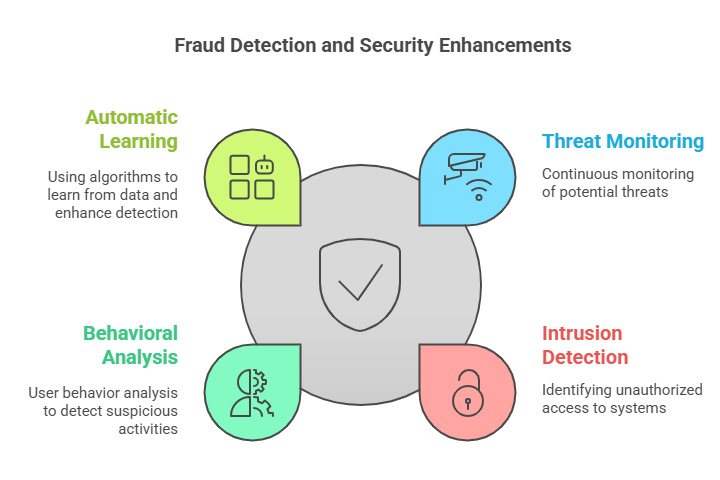 AI-based security agents can monitor threats, detect intrusions, and initiate automatic countermeasures. They track transaction patterns, usage anomalies, and access behaviors. They use behavioral analysis and machine learning to detect fraud in real-time (such as SIM swap fraud or international toll bypass). Agents can flag suspicious activities, block compromised accounts, and generate alerts.
AI-based security agents can monitor threats, detect intrusions, and initiate automatic countermeasures. They track transaction patterns, usage anomalies, and access behaviors. They use behavioral analysis and machine learning to detect fraud in real-time (such as SIM swap fraud or international toll bypass). Agents can flag suspicious activities, block compromised accounts, and generate alerts.
Use Cases
In her article “Agentic AI in Telecom Industry - The Ultimate Guide“, Dr. Jagreet Kaur Gill proposes a dedicated Fraud Detection Agent.
- AI enhances telecom security by detecting suspicious behaviors on networks, identifying unusual patterns in call records and data usage to flag potential fraud attempts.
- Integrating agentic AI into security operations centers (SOC) transforms how teams detect, analyze, and respond to threats.
- Agents can continuously learn from new fraud patterns, automatically adapt security protocols, and collaborate across systems to prevent threats in real-time.
General Operational Optimization and Supply Chain Management
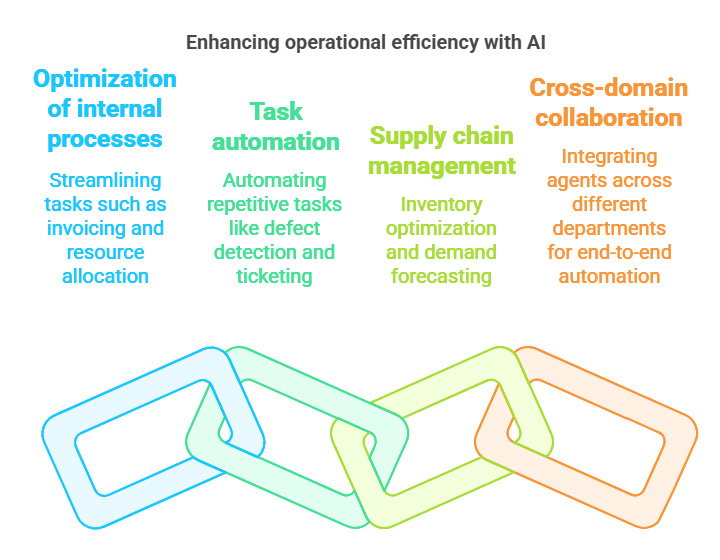 Agentic AI can optimize internal processes such as billing, resource allocation, and compliance. Agents automate repetitive tasks like fault detection, ticketing, billing validation, and network tuning, reducing labor and maintenance costs. They can manage the supply chain, optimize inventory, forecast demand, and anticipate logistical needs. Collaboration among multiple agents across different telecom domains (customer support, network management, billing, etc.) enables end-to-end automation.
Agentic AI can optimize internal processes such as billing, resource allocation, and compliance. Agents automate repetitive tasks like fault detection, ticketing, billing validation, and network tuning, reducing labor and maintenance costs. They can manage the supply chain, optimize inventory, forecast demand, and anticipate logistical needs. Collaboration among multiple agents across different telecom domains (customer support, network management, billing, etc.) enables end-to-end automation.
Real-World Examples
- In March 2023, AT&T announced a partnership with NVIDIA to implement new capabilities built around artificial intelligence, including optimizing field agent deployment using NVIDIA cutOpt[5]. Early tests at the time showed an increase in field operations and a 90% reduction in associated cloud costs.
- Also related to field operations, Orange uses AI-based image recognition features to validate the quality of completed work, allowing for immediate corrective actions if necessary[6].
[5] AT&T Press Room - AT&T Supercharges Operations With NVIDIA AI
[6] Orange - How AI drives Orange’s network innovation
Edge Computing Applications
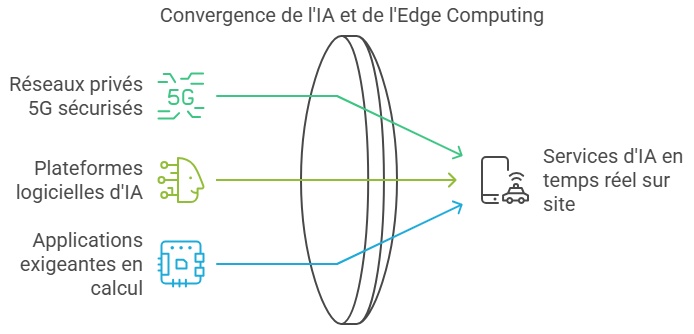 AI agents can support intensive computing workloads on private edge networks, combining secure low-latency 5G private networks with AI software platforms to enable real-time on-site AI services.
AI agents can support intensive computing workloads on private edge networks, combining secure low-latency 5G private networks with AI software platforms to enable real-time on-site AI services.
Real-World Example
Verizon partnered with Nvidia to supercharge AI workloads on private 5G networks coupled with mobile edge computing[7]. This supports compute-intensive applications such as generative AI models, computer vision, and augmented reality. Applications are varied, including:
- digital twin,
- manufacturing automation,
- in-store traffic analysis,
- supply chain management (smart restocking, transportation, and logistics).
Personalized Marketing
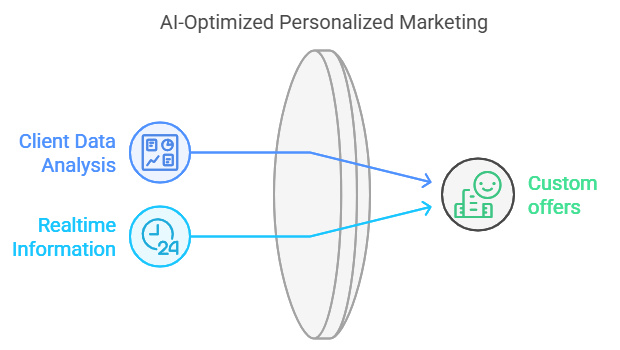 Agentic AI can analyze customer data and predict the most relevant offers. It tailors recommendations using real-time information on customer activity and service usage.
Agentic AI can analyze customer data and predict the most relevant offers. It tailors recommendations using real-time information on customer activity and service usage.
Real-World Example
- T-Mobile uses AI based on real-time user behavior to personalize offers[8]. AI sales agents can identify customers likely to upgrade their plans or renew their contracts.
[8] AWS - At T-Mobile, AI Humanizes Customer Service
Analysis and Reporting
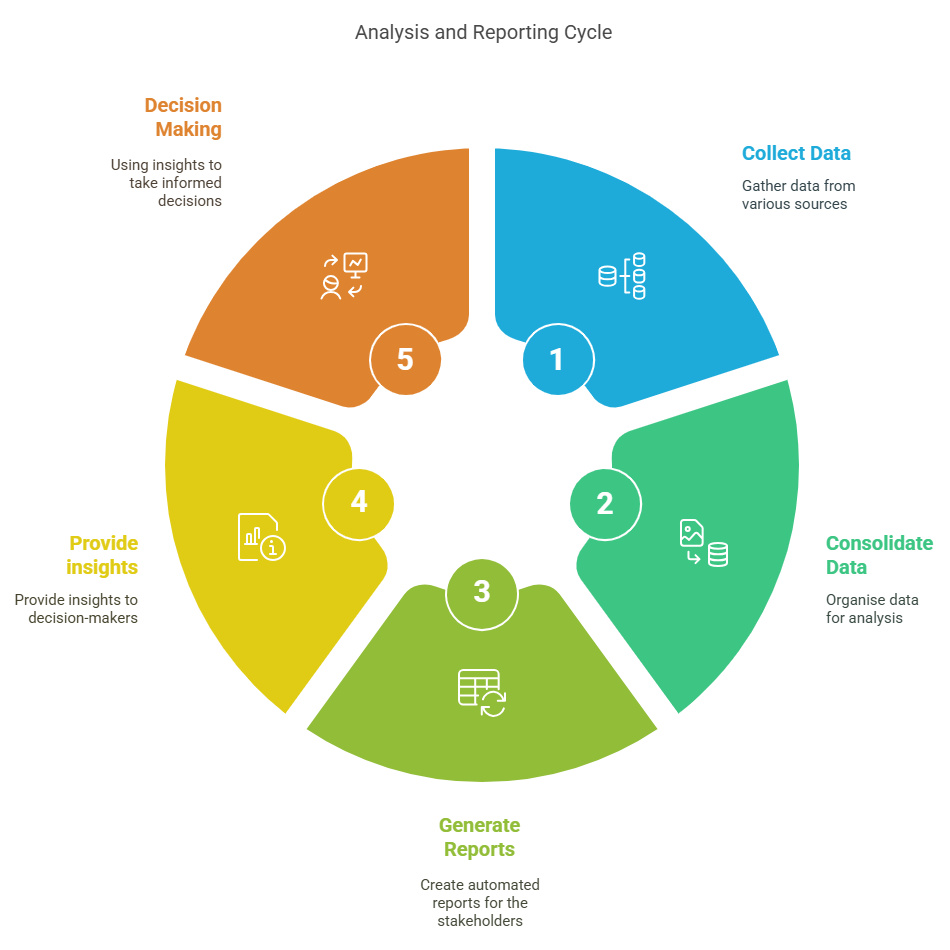 Agents can consolidate data from various sources and generate automated dashboards and reports for executives and teams, facilitating data-driven decision-making.
Agents can consolidate data from various sources and generate automated dashboards and reports for executives and teams, facilitating data-driven decision-making.
Use Cases
In her article “Agentic AI in Telecom Industry - The Ultimate Guide“, Dr. Jagreet Kaur Gill describes an Analysis and Reporting Agent that would perform the following functions:
- Auditing billing logs, payment records, and plan configurations.
- Detecting discrepancies such as overbilling, delayed charges, or misapplied discounts.
- Recommending billing adjustments and transmitting alerts or refunds for customers.
Conclusion
These applications demonstrate how AI agents go beyond customer support to transform telecom operations, making them smarter, proactive, and resilient.
Agentic AI systems work by breaking down complex tasks into specialized agents and managing their interactions through an orchestration layer. This collaborative approach, where multiple agents work together, is crucial for addressing complex problems that exceed the capabilities of a single agent. The agentic architecture enables this collaboration, often structured hierarchically with utility agents, super agents, and orchestrator agents. Orchestration systems based on frameworks like SWARM [9] or platforms like Accenture AI Refinery™ [10] manage these interactions and achieve complex objectives.
[9] Neurons Lab - Building a Telco AI Agent Orchestration Layer with SWARM